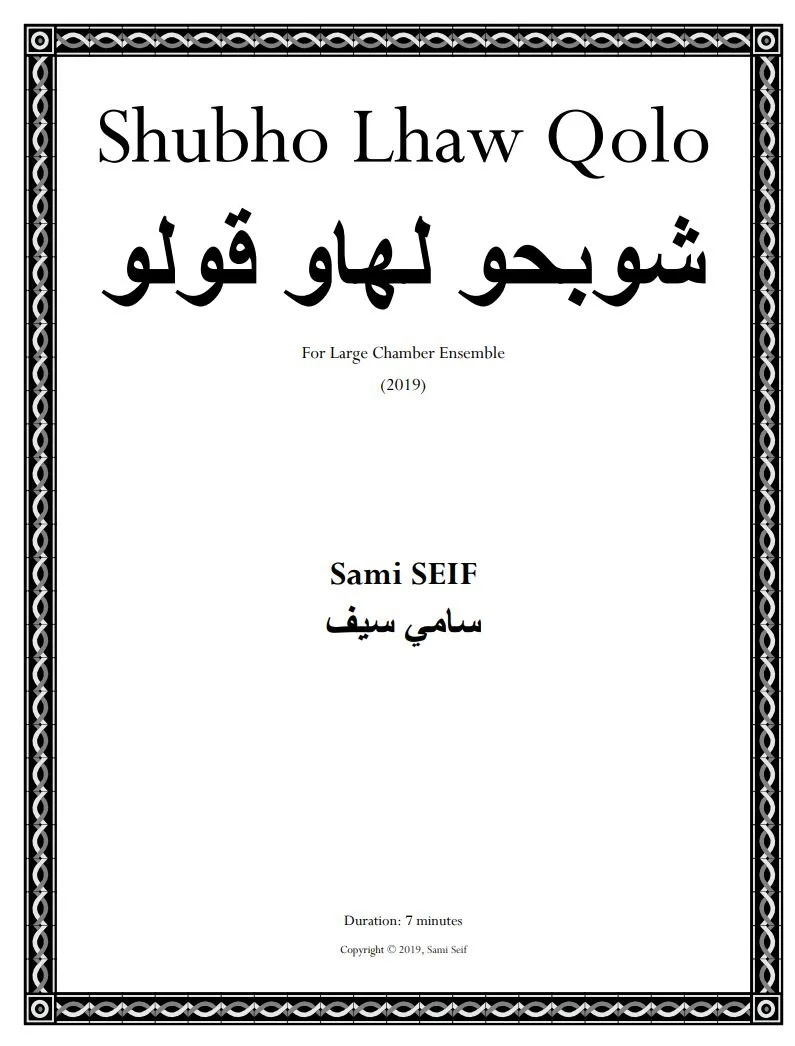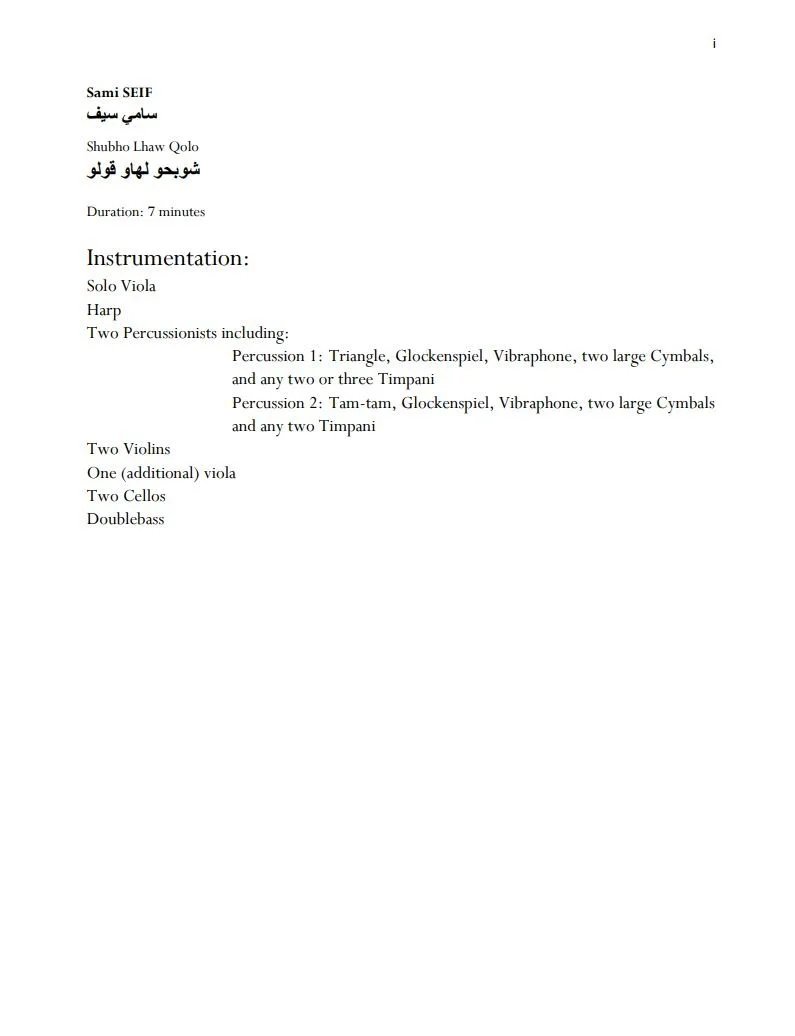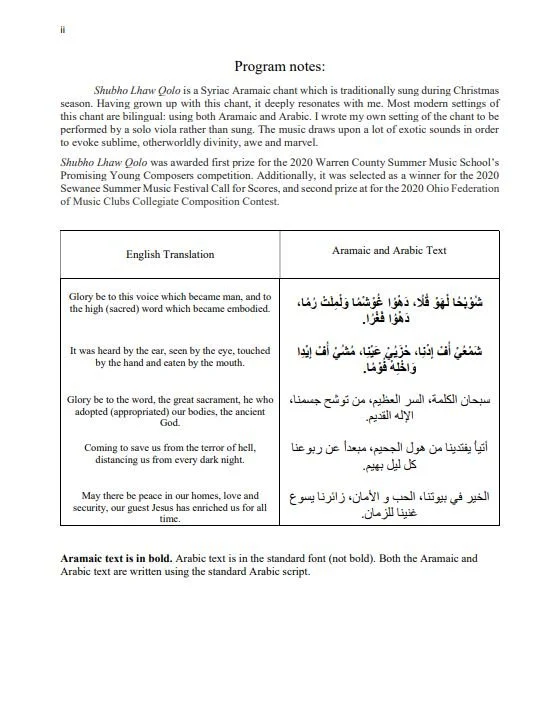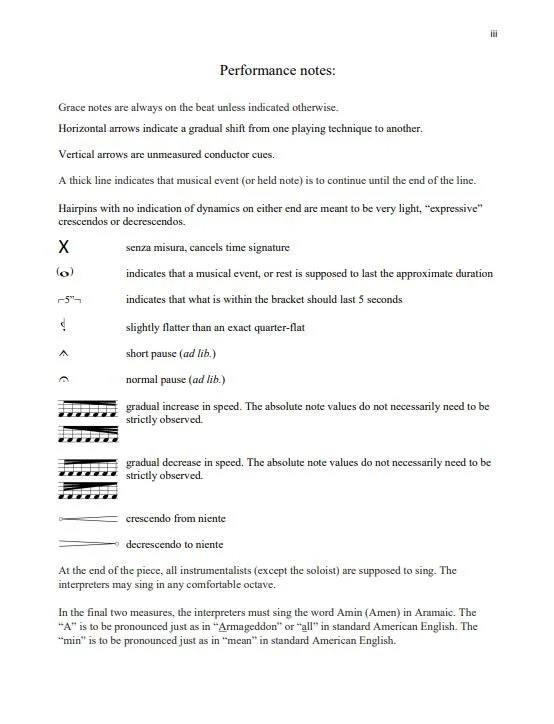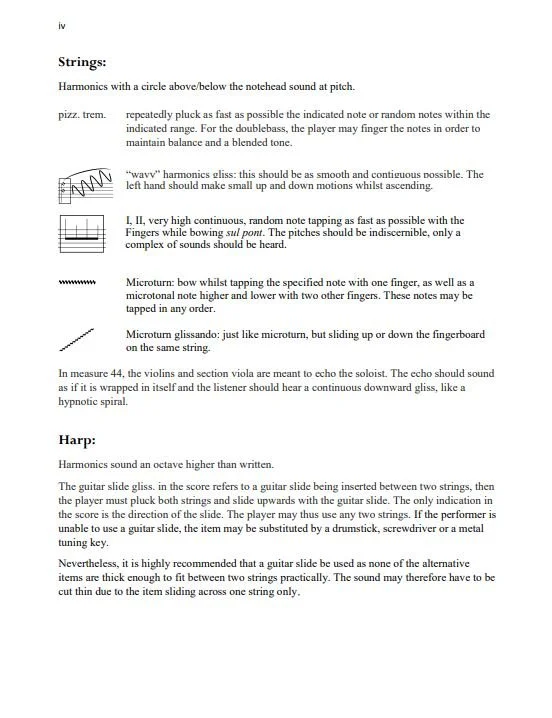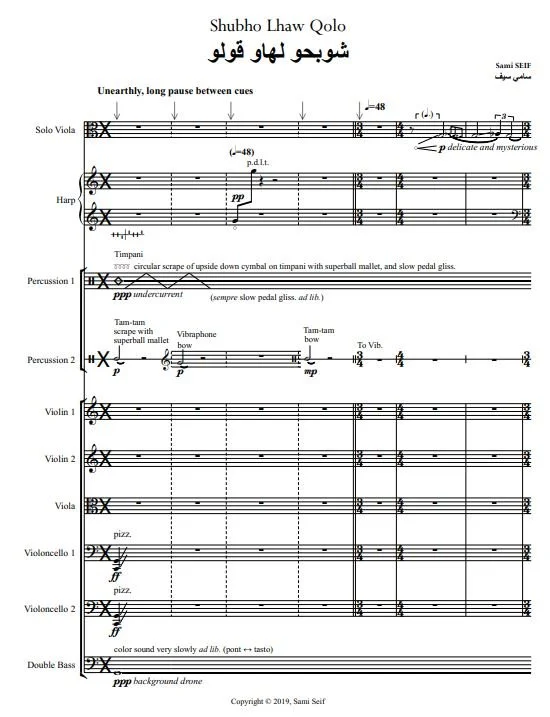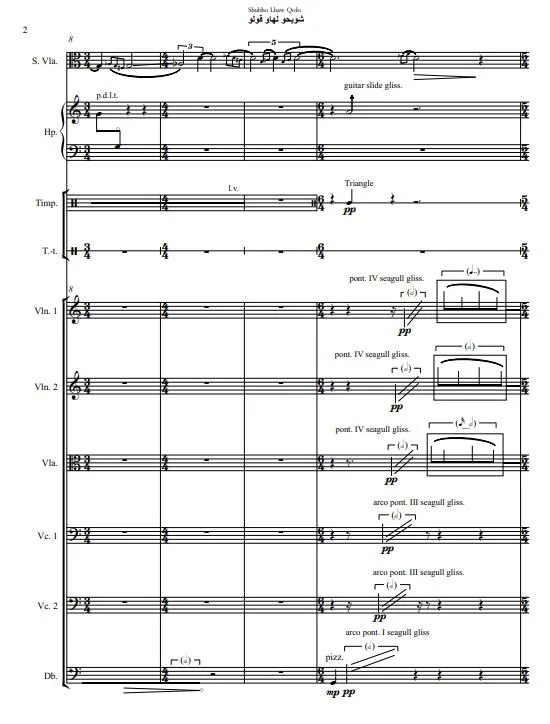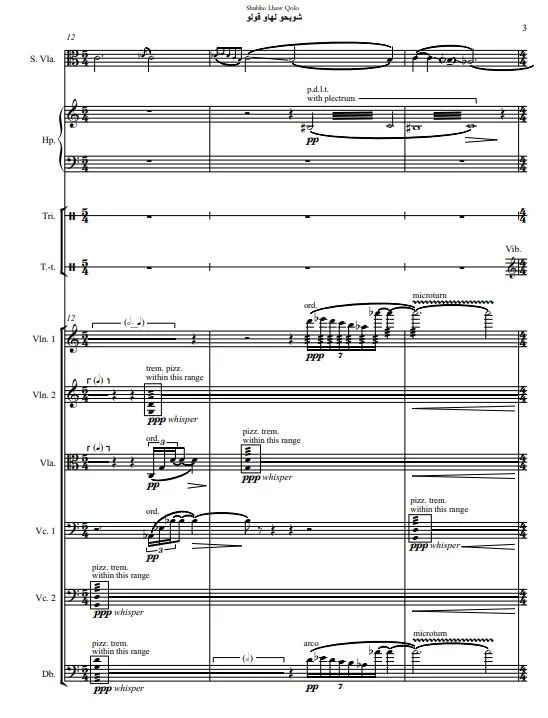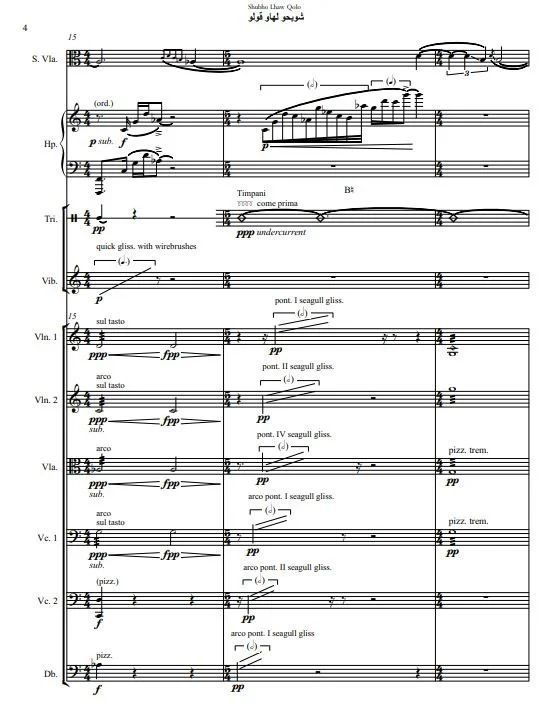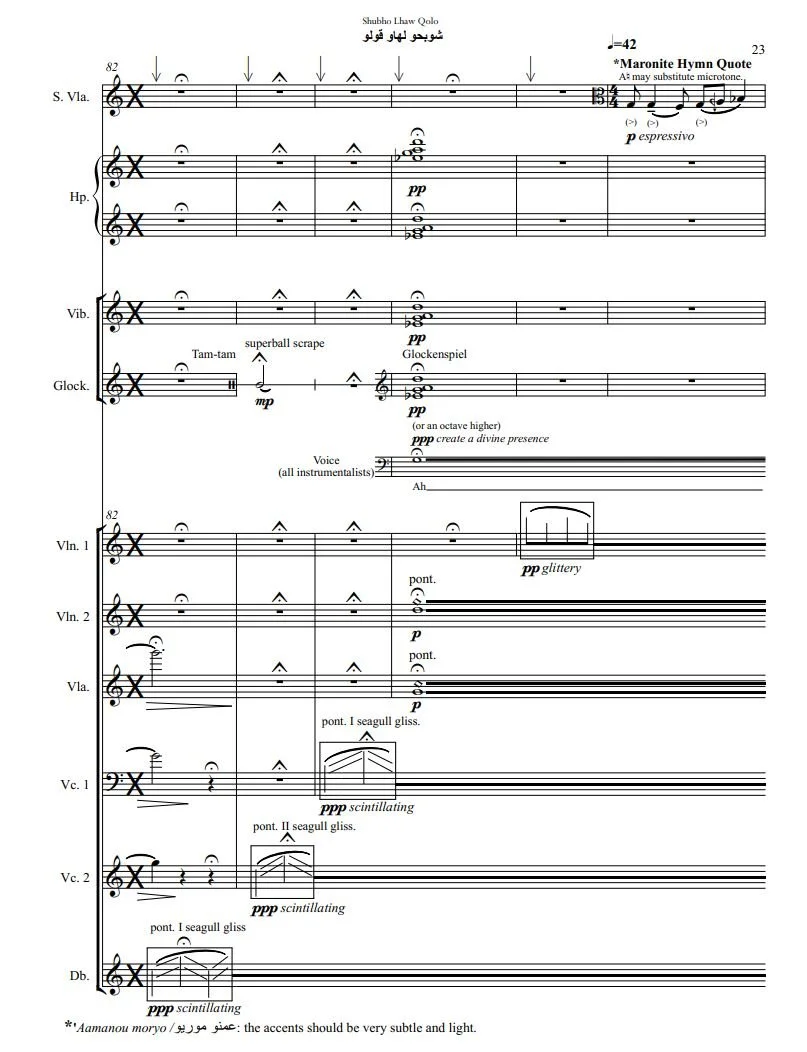
Viola
Bowing On Different Parts of the Body
Bowings can be done anywhere on the body, but the spots that give the best tone changes are on the ribs (body), the bridge, and the tailpiece. The bridge gives the string sound along with the wood. The edge of the bridge is loudest. The tailpiece is interesting because it changes per instrument. The tailpiece pitch will sound the fundamental note of the cavity of the body.
Dynamic Ranges: pp - ff*
Bowing on the bridge: n - pp
Bowing on the body: n - pp
Bowing on the metal (sub ponticello): pp - ff
Bowing behind the nut: n -ff
Bowing on the tailpiece: n - p
Bowing on the Strings (Contact Points)
Although it is a traditional technique, there are different spots a player can bow on the strings that give different tone colors. String plays consider this a gradient meaning it can change gradually and seamlessly. The order of the gradient goes Molto Sul Tasto, Sul Tasto, Ordinario, Sul Ponticello, and Molto Sul Ponticello; sul tasto being closer to the scroll and ponticello closer to the bridge.
Sul Ponticello gives a metallic sound that is used as an effect. Sul Tasto cuts out the harmonics and lowers the dynamics. It becomes more difficult to play louder on Sul Tasto and the sound is thinner and more muted.
Dynamic Range:
Sul Ponticello: pp - ff
Sul Tasto: pp - mf+
Col Legno
There are 2 types of bowings for this technique: Battuto and tratto. Battuto is when the strings are struck with the wooden side of the bow like a percussive instrument. Tratto is when the player bows on the strings (still using the wooden side).
Dynamic Ranges:
Col Legno Battuto: n - mp
Col Legno Tratto: n - p
Pizzicatos
There are 4 types of pizzicato techniques: buzz, Bartok, harmonic, and nail. Buzz pizz is a difficult technique in general and hard to consistently produce for many players. Bartok pizz cannot be played too quickly or at soft dynamics, but its sound is extremely cutting and intense. Harmonic pizz can only be played at soft dynamics. Nail pizz does not have any limitations, but consult with the player on how fast the can execute.
Dynamic Ranges:
Pizzicato: n - mf
Bartok Pizzicato: mp - ff
Buzz Pizzicato:
Nail Pizzicato: p - f*
Harmonic Pizzicato: n - mf
*Players may find it uncomfortable to play at louder dynamic ranges as it pulls on the nail.
Scordatura
Detuning the instrument. Players ask that you don’t detune more than 2 strings and to never detune more than a perfect 4th. This technique is useful for players when encountering awkward fingerings and chords. It is also great for music based on the overtone series as you can have your open string be tuned to whatever fundamental is needed, giving it more resonance when played on the open string. Players require that the composer puts in a second staff of music indicating the sounding pitch.
Bow Pressure
This can also be produced in a gradient as well. The range is from overpressure being the hardest to flautando being the lightest. Can produce different sounds based on the bow placement. This technique is typically noted with a simple graphic or words.
Dynamic Range: n - ff
Body Percussion
Players can use any number of place to do percussion on the body of the instrument, but 3 common types are tapping, knocking, and slapping. The body of the instrument is the most resonant.
Dynamic Range: pp - mf*
*Dynamics are dependent upon where the instrument is struck and how hard a player is willing to strike spots on the instrument. Players may be extremely hesitant to perform any type of instrument percussion to prevent damages.
Half Pressure
Produces an unstable sound. Applying half the pressure on the strings with the bow so tone is inconsistent.
Dynamic Range: n - ff*
*Can be played at any dynamic range, however the timbre changes as it becomes louder.
Harmonics
Harmonics are when the player lightly touches the string and produced an overtone. They get increasingly more difficult the higher you go, but many players can get up to the 7th or 8th partial. Players will also use false harmonics to produce the same sound. This is when the player uses two fingers, one to create and artificial nut while the other finds the overtone.
Dynamic Ranges: n - f
Double Harmonics
Touching on 2 natural harmonics on a string will multiply the partials together to result in incredibly high overtones. Generally it is unstable, but it is an excellent way to cheat up to some high notes.
Harmonic Trills
There are many different ways to produce harmonic trills which include differences in timbre, using false harmonics, and natural harmonics. Each produces slight variations in tone, but nevertheless are the are all used the same way.
Dynamic Ranges: n - ff
Seagulls
Glissandi between the extreme ranges of the instrument produce a seagull-like sound. This technique is finicky in nature and not measurable like many other techniques.
Dynamic Range: pp - ff
Jete (Thrown Bow)
The bow bounces off in a ricochet; it is a percussive effect. Based on the amount of force used, the bow can bounce off more or less times.
Dynamic Range: n - f
Works
